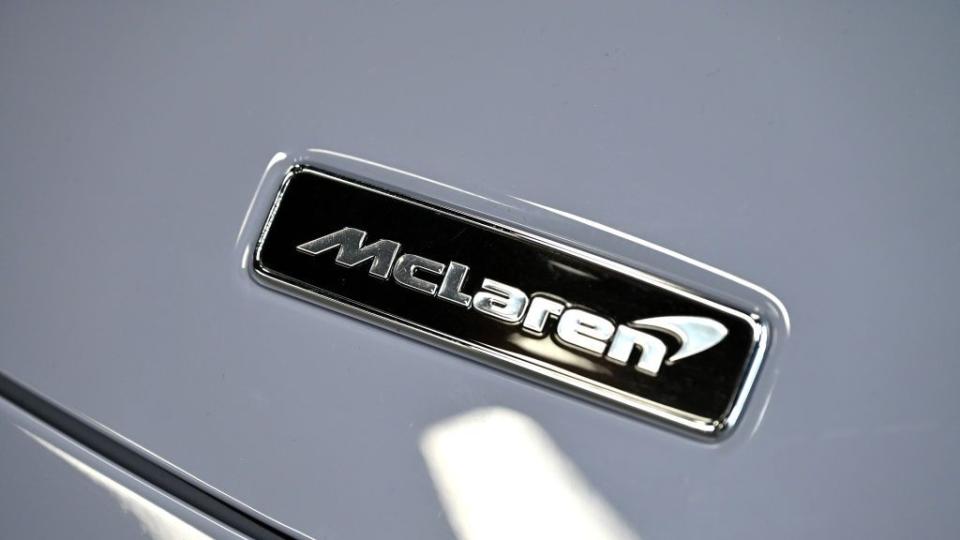McLaren Wants to Build a Plug-In-Hybrid SUV

CEO Michael Leiters confirms McLaren wants to collaborate with another automaker on a "shared performance" SUV model.
There's an ambition to use one of the supercar maker’s existing plug-in powertrains.
Pricing would be close to the Ferrari Purosangue and the Rolls-Royce Cullinan, which is to say, close to $400,000.
McLaren has been through several existential crises since its former CEO, Mike Flewitt, promised in 2019 that the supercar maker would never build an SUV. Flewitt has long since departed, and now his successor has confirmed both that McLaren does want to build something that sounds very SUV-ish, but also that he wants it to be a plug-in hybrid.
Although Flewitt's replacement as CEO, Michael Leiters, didn't use the term SUV when Car and Driver spoke to him at McLaren's HQ in Woking, England, last month, his definition of a "shared performance vehicle" certainly sounds like a rival to luxury utes.
"To unlock our full potential as a company, we believe there is a second stage," he said, to enlarge and expand our lineup beyond the segment where we are today. We have called this 'shared performance' because you can share the performance with more people than you can have in a McLaren today. So it would have two seats plus."
McLaren has already built cars with more than two seats—the seminal F1 and the 2020 Speedtail both having room for three cramped occupants thanks to their central driving positions. But this future model is clearly intended to be larger and more practical.
To no surprise, that means it won't be built on McLaren's existing carbon-fiber supercar architecture, with Leiters acknowledging the only practical solution is to base it on the platform of a larger automaker: "I think the smart way is with technology partnership, to find a partner and create synergies," he says.
McLaren's move to simplify its formerly complex ownership structure is likely integral to this search for an alliance. Earlier this year it was confirmed that the Bahrain sovereign wealth fund, Mumtalakat, had taken 100 percent ownership of McLaren: offering a stake in the company may well be integral to creating the deep relationship necessary to build the new model.
While much of the luxury market is moving to make new models fully electric, which Leiters admits is an option, he says that his ambition is that the new McLaren will be a plug-in. That's because he wants it to use one of the company's existing supercar powerplants, either the V-6 PHEV which sits in the existing Artura, or—more likely, given the extra mass of an SUV—the more powerful V-8 PHEV that McLaren has already confirmed it is developing for the 750S replacement.
"If we do a PHEV we want to understand if we can use our own powertrain," he says, "to integrate our powertrain into an existing platform - that would be the ideal."
Creating a short list of potential partners isn't hard. The Financial Times reported that McLaren had entered talks over collaboration with BMW, Geely, Hyundai, and Lucid last year. Of those, only BMW has a platform that would obviously work for this planned combination of combustion and electrical power—as proved by the existence of the XM.
Leiters says that the new car would likely be built by the partner due to the cost and challenge of integrating it into the existing supercar-focused McLaren Production Centre in Woking. But he also says that, to be a credible McLaren, it will need to offer high levels of bespoke optioning but also to feature cutting-edge technology, possibly including advanced materials to reduce mass.
"The core attribute of a McLaren is light weight," he said. "We have a world-class competence there we could bring into a partnership, even talking about the structural elements of a platform."
How soon could such a car arrive? Even if a deal was signed soon, it would still be several years away, limiting its potential life span in parts of the world committed to early bans on the sale of combustion-engined cars. On pricing, Leiters thinks it would be positioned toward the top of what is already a hugely expensive segment.
"We have different ideas of how to position this car," he says. "We could put it like Ferrari and Rolls-Royce, who have been very aggressive with their pricing [on the Purosangue and Cullinan]. Lamborghini and Aston Martin have been less aggressive and are counting more on volumes. I would always prefer to be more aggressive... for our brand I think it would be the right thing to do."
Suggesting a price of around the $400,000 mark. If Leiters delivers on this plan, it will mark a radical departure for the supercar maker.
You Might Also Like

 Yahoo Autos
Yahoo Autos 